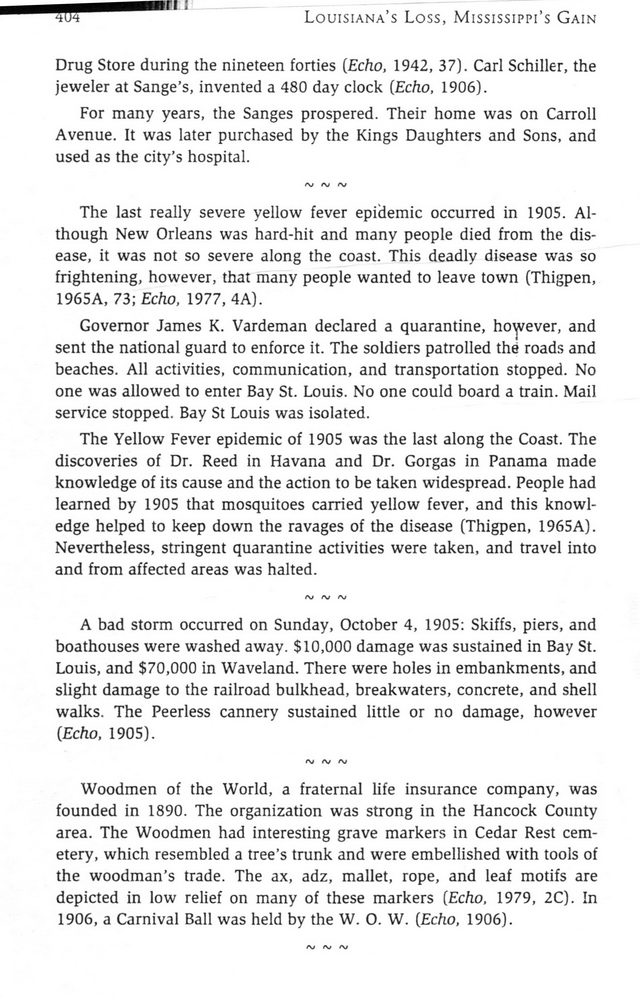This text was obtained via automated optical character recognition.
It has not been edited and may therefore contain several errors.
Louisiana?s Loss, Mississippi?s Gain Drug Store during the nineteen forties (Echo, 1942, 37). Carl Schiller, the jeweler at Sange?s, invented a 480 day clock [Echo, 1906). For many years, the Sanges prospered. Their home was on Carroll Avenue. It was later purchased by the Kings Daughters and Sons, and used as the city?s hospital. M A/ ft/ The last really severe yellow fever epidemic occurred in 1905. Although New Orleans was hard-hit and many people died from the disease, it was not so severe along the coast. This deadly disease was so frightening, however, that many people wanted to leave town (Thigpen, 1965A, 73; Echo, 1977, 4A). Governor James K. Vardeman declared a quarantine, however, and sent the national guard to enforce it. The soldiers patrolled the roads and beaches. All activities, communication, and transportation stopped. No one was allowed to enter Bay St. Louis. No one could board a train. Mail service stopped. Bay St Louis was isolated. The Yellow Fever epidemic of 1905 was the last along the Coast. The discoveries of Dr. Reed in Havana and Dr. Gorgas in Panama made knowledge of its cause and the action to be taken widespread. People had learned by 1905 that mosquitoes carried yellow fever, and this knowledge helped to keep down the ravages of the disease (Thigpen, 1965A). Nevertheless, stringent quarantine activities were taken, and travel into and from affected areas was halted. A bad storm occurred on Sunday, October 4, 1905: Skiffs, piers, and boathouses were washed away. $10,000 damage was sustained in Bay St. Louis, and $70,000 in Waveland. There were holes in embankments, and slight damage to the railroad bulkhead, breakwaters, concrete, and shell walks. The Peerless cannery sustained little or no damage, however [Echo, 1905). (V M Woodmen of the World, a fraternal life insurance company, was founded in 1890. The organization was strong in the Hancock County area. The Woodmen had interesting grave markers in Cedar Rest cemetery, which resembled a tree?s trunk and were embellished with tools of the woodman?s trade. The ax, adz, mallet, rope, and leaf motifs are depicted in low relief on many of these markers [Echo, 1979, 2C). In 1906, a Carnival Ball was held by the W. O. W. (Echo, 1906). cw M (V

Gardebled Louisiana's-Loss-Mississippi's-Gain-page-404